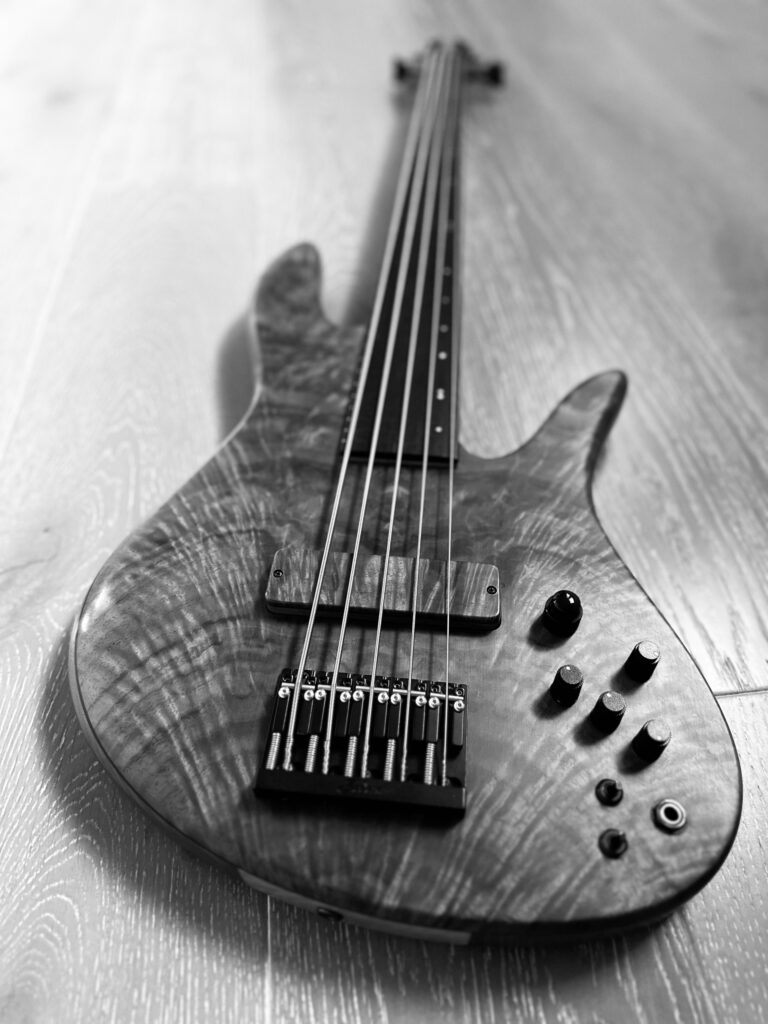How to get more “mwah” from your fretless bass

The fretless bass is expressive, fluid, and capable of a singing quality that fretted instruments can’t quite match. Among its most beloved sounds is the “mwah” – that vocal-like, singing sustain that can make melodic lines come alive.
Getting great mwah isn’t just about playing fretless; it’s about understanding why it happens, then shaping your technique, setup, and gear to bring it out. Here’s what I’ve learned over the years.
The Mechanics of Mwah
At its core, mwah comes from the bass string subtly rattling against the fingerboard. Instead of a hard “fretted” stop, the string vibrates in such a way that it lightly kisses the board during its sustain. This interaction is what creates that singing, vocal-like tone.
Several factors enhance this:
- String angle: The more parallel the string is to the neck, the more contact you get.
- Fingerboard hardness: Denser woods transmit the vibration better and keep the sustain alive.
- Overall sustain: A resonant instrument will naturally make mwah bloom.
Right-Hand Technique: Where You Pluck Matters
If you want maximum mwah, pluck closer to the neck. This isn’t just a stylistic choice — it’s physics:
- String vibration pattern: Plucking near the neck excites the string farther from its fixed bridge point, creating a wider vibration arc that favors the fundamental and low harmonics.
- Tone result: This gives the mwah a warmer, more sustained, and more “singing” quality.
- Contrast: Plucking near the bridge emphasizes higher harmonics, producing a tighter, brighter, and more defined sound.
Setup: Action & Truss Rod
The right setup is crucial:
- Minimal relief: Flatten the neck as much as possible without causing unplayable buzz.
- Low action: Keeps the string close to the fingerboard so it can interact and “sing.”
- Balance is key: Too little relief or too low action can cause dead spots or inconsistent mwah across the fingerboard. Take your time adjusting, or have a skilled tech do it.
String Choice
For mwah, I’ve had the best results with roundwound strings. They generally offer more sustain and harmonic richness than flats, letting the mwah ring out longer. That said, they will mark your fingerboard faster, so be prepared for maintenance if you go this route, especially if your fingerboard is one of the softer woods.
Final thought:
Mwah isn’t just a setup quirk, it’s a combination of physics, feel, and finesse. The more you experiment with plucking position, neck setup, and string choice, the more you’ll discover how to make your fretless sing exactly the way you hear it in your head.